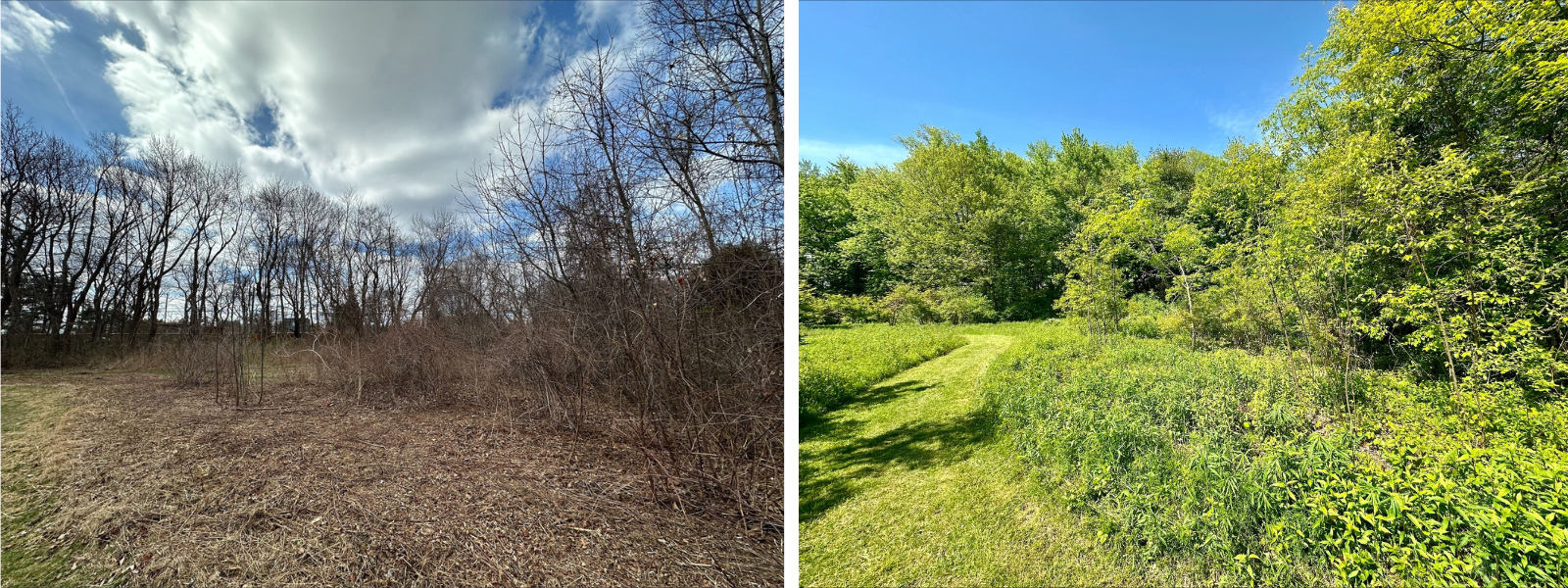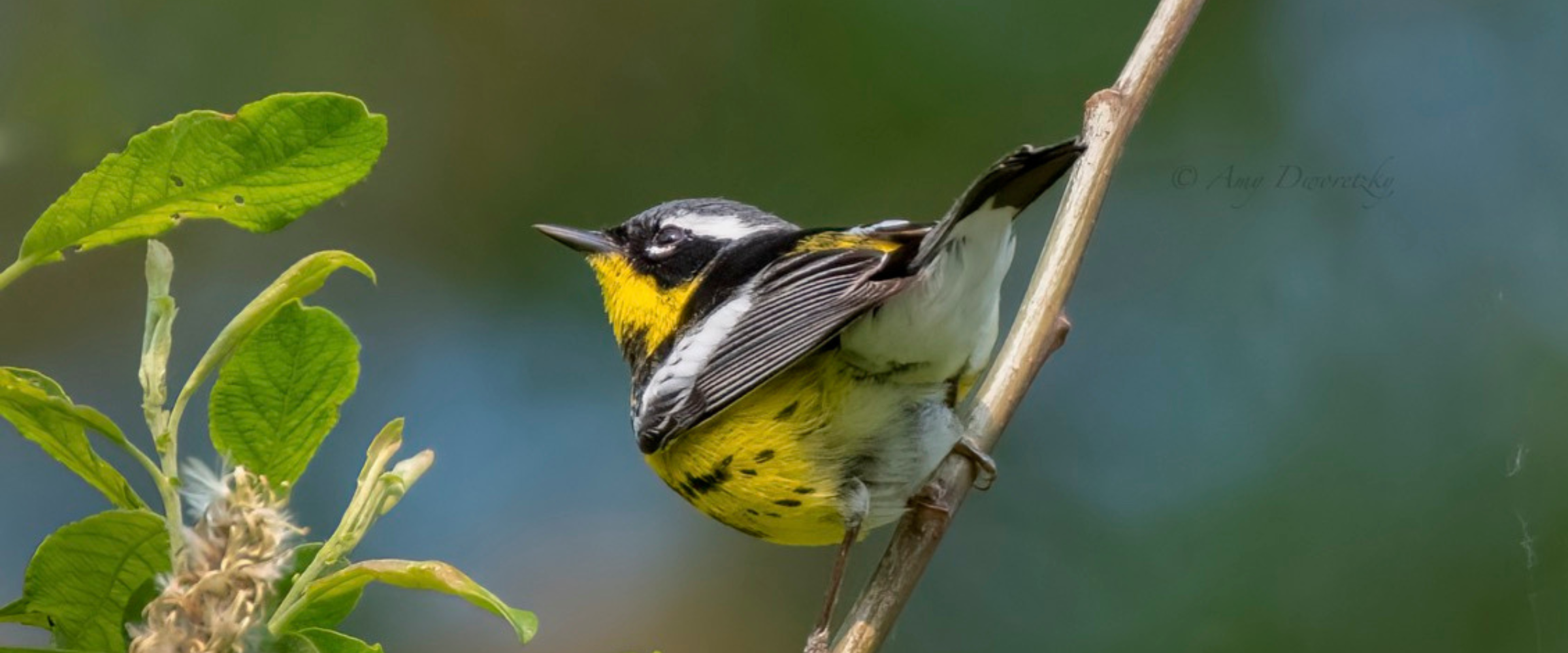Spring has sprung, bringing with it longer days, blooming flowers, and the return of many migrating birds to the Greenwich Audubon Center. We’ve been preparing for these returning visitors with carefully planned mowing and invasive species removal, which you can see at our George Bent Apple Orchard and in the fields adjacent to our Hawk Watch site.
These areas look very different from a lot of the other managed locations on our property—and for good reason.
Much of the roughly 700 acres of land managed by the Greenwich Audubon Center is mixed deciduous forest, composed of a mixture of mature tree species that form a closed canopy. While these habitats are vibrant, integral parts of the local ecosystem, many species of resident and migrant birds require areas of shrubland and meadow, or “early successional habitats,” to successfully nest and breed. These include species like the Orchard Oriole, Brown Thrasher, and Blue-winged Warbler.
Regular mowing and cutting maintains the character and structure of these spaces, and we’re already seeing the results of what we’ve done so far this spring!
The birds that rely on this habitat are back in action, looking for mates and suitable nesting areas to raise their chicks this spring and summer. Plus, many native plant species—including tall goldenrod, Jack-in-the-Pulpit, Indiangrass, and milkweed—are already beginning to emerge in abundance.

Come take a look and see what you can find during your next visit, and stay tuned for further habitat management updates on our Facebook and Instagram.





